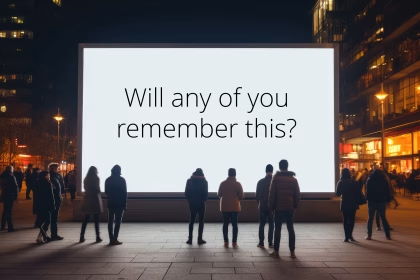This study aims to examine how different types of pro-environmental video content (featuring humans versus AI-generated characters) influence household waste sorting attitudes and behaviors among Ukrainian residents. The research was conducted in two stages using a mixed-method approach. In the first stage, 102 individuals aged 18–45 watched two videos on waste sorting and completed an online questionnaire. Cluster and variance analyses were performed using Statistica software. In the second stage, 35 participants underwent a laboratory-based emotion analysis using iMotions software, heart rate monitors, and galvanic skin response sensors at the Behavioral Lab of Sumy State University (Ukraine) from May to July 2024. The results revealed that videos featuring real people were more effective in generating interest (average rating: 3.5 vs. 3.2) and emotional engagement, particularly joy and contempt, which were the most frequently expressed emotions. Cluster analysis identified four distinct respondent groups. Cluster 1 (39.2%) – primarily young women – responded positively to human-led videos but showed limited behavioral change. Cluster 2 (19.6%) – women aged 26–35 – reacted positively to both videos and were most willing to adopt waste sorting behavior. Cluster 3 (23.5%) – primarily men – showed moderate engagement and sorted waste occasionally. Cluster 4 (17.6%) – highly educated women – exhibited the least positive responses and were least likely to change their behavior. The emotion analysis confirmed that videos featuring real people elicited stronger emotional responses across all categories, whereas AI-generated videos prompted higher levels of anger but generally weaker engagement.







